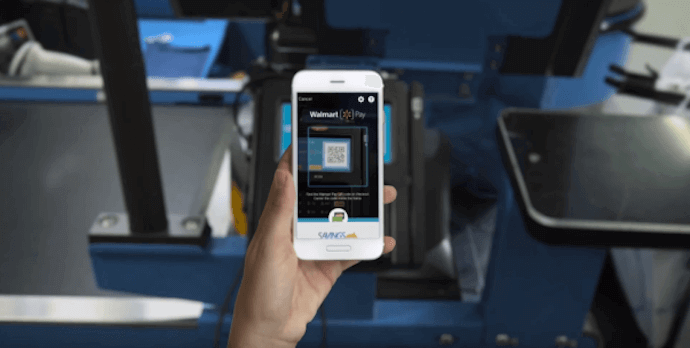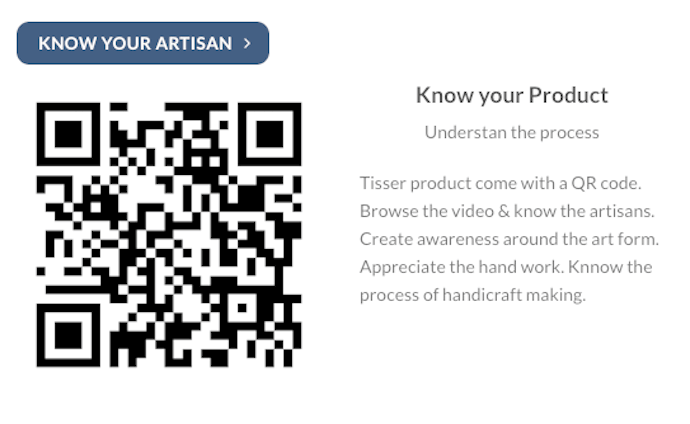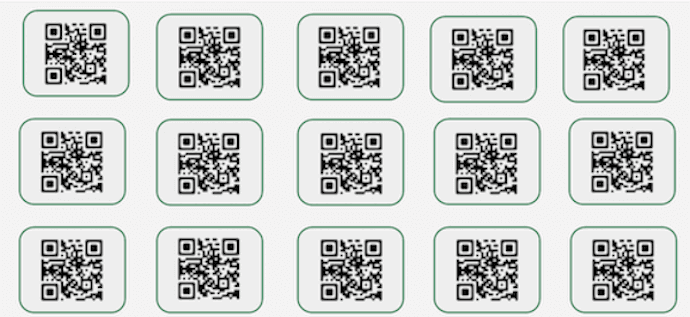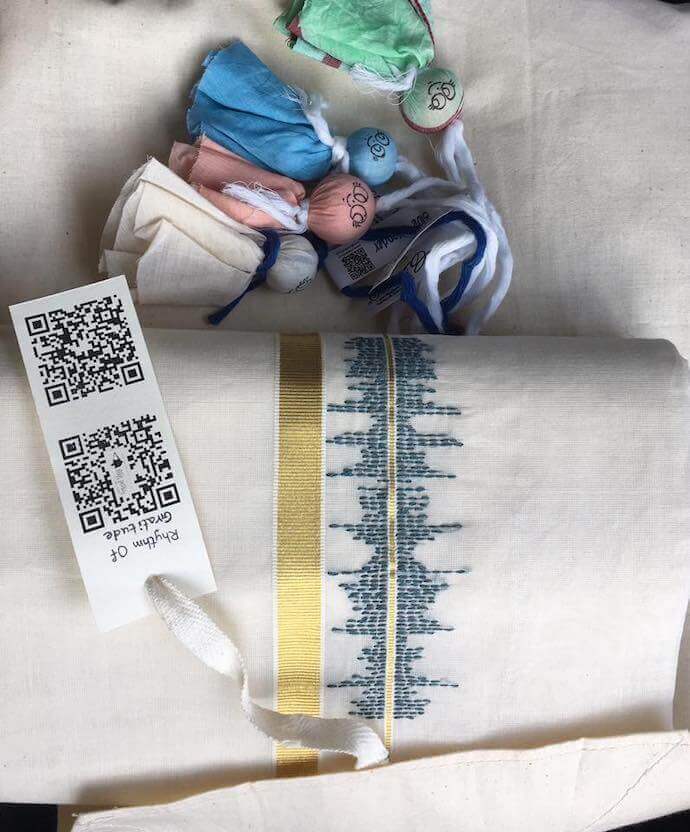Handloom and Handicrafts industry is one of the most vibrant industries of any country. The industry supports indigenous skills and craftsmanship. And contributes extensively to employment generation and export.
Thus, it is very important for the handloom and handicraft industry to keep growing and enhancing. But at present, it is hit by some challenges.
Generally, artisan’s work is displayed through exhibitions. But not many people turn up because either the registration process is time consuming or people aren’t aware of such events taking place.
That is, say posters about the exhibition are placed throughout the city. But not many people actually make the effort of typing the event link in their mobile browser to register or know more about the exhibition.
Moreover, it is difficult for artisans to accept digital payments (such as credit/debit cards) as they cannot invest in expensive POS card machines and they are always moving (for exhibitions).
Furthermore, many handicraft institutions have their own app to promote their art and craft. But how to increase app downloads is one of the main challenges they face.
Besides, tracking and managing inventory is a difficult task to handle. Hence, how to make it easy and quick?
It’s time to enhance the handloom and handicrafts industry by introducing technology. By using QR Code technology, you can solve all the challenges mentioned above. And make this industry engaging and interactive.
In this article, we will detail you on QR Codes in handloom and handicraft industry. Plus, also give you examples of how they are already being used for diverse purposes.
A. Use Cases of QR Codes
QR Codes are advanced barcodes. The best part is that they can easily be scanned via a smartphone to access the content encoded.
From functional purposes such as payments to social purposes such as spreading awareness about the industry—QR Codes are rocking all the way. See how:
1. For quick and easy payments
QR Code-based payments are very popular today. You must also have scanned a QR Code to make a transaction. They are easy, quick, and secure.

Akash Gehani, Co-Founder of Instamojo, which is one of the most popular payment gateways for small businesses in India, says:
“QR Codes bring a significant advantage for the informal establishments that have low technology adoption. These entities cannot afford computers and POS (point-of-sale) machines unlike bigger merchants, so there is a large room for growth and penetration of QR Codes.”
He further added,
“Merchants that sell handicrafts or food items often go to trade fairs or markets for their business, and even auto-rickshaws, are perfectly suited for QR Code-based payments as it is portable, quick and safe.”
Also, The Ministry of Textiles, Government of India, promotes digital transactions using BHIM app or Bharat QR Code. Bharat QR Code is one of the most popular QR Code-based mobile banking apps in India.
2. To increase app downloads
Say a handicraft institute has its own app to promote artisan’s work. To promote the app, the institute uses print media creatives such as posters. And each poster has the link of the app.
But not many people will actually type the app link on their mobile browser to install it. This is because it requires both time and effort.
With QR Codes, Make the task easier with a QR Code for app link And then print it on your promotional material.

Upon scanning, the end users will be redirected to the app link. Since the whole process now becomes effortless, you will see an increase in app downloads.
For example, Uttar Pradesh Institute of Design, India has a mobile app to push the state’s craft heritage. It uses QR Codes to promote the app.
3. To share artisan’s stories
One of the main aims of the handloom and handicraft industry is to support artisans. And one of the ways is to share their story and the hard work that goes behind a piece of work.
And for this, you will print brochures. This will require a lot of paper consumption and ensure printing costs.
By using QR Codes in handloom and handicraft industry, you can share stories the sustainable way. Just like Tisser India is doing.
Tisser India is one of the biggest platforms that supports weavers and craftsmen. The organisation uses QR Codes to share artisans stories. Upon scanning, end users can browse through artisan’s videos making handmade products.

Similarly, you can create and place these QR Codes on various places at your exhibition.
4. Make it easy to save contact
Generally, to build your network you distribute business cards. This business card has your contact details.
But saving a contact requires manually typing contact details and then adding it to their phonebook. And hence not many people do it.
To make their task easier you can add a QR Card to your business card. This QR Code will link to your contact details. Upon scanning, end users will be prompted to ‘Save you as a contact’.
Since now minimal effort is required, people will readily save contact details. And this will help you in your network growth.
For example, The Handmade is a handloom and handicraft organisation in Vietnam. It uses a QR Code on its website to share contact details. Upon scanning, end users can effortlessly save contact.
In the same manner, Sat Kabir Art and Craft, India is a platform that sells handmade products. It also uses a QR Code on its website that leads visitors to save contact upon scanning.
5. Make it easy to register for art events
Everyone expects a high footfall to an event/exhibition, which they have organised. And if the registration process is simple, there will likely be more registrations.
One of the ways to simplify it is by using QR Codes. That is, instead of mentioning the whole link on your promotional material, encode the registration link in a QR Code.
Upon scanning, interested people will easily be able to register.
For example, Kolkata Handmade Fair 2019, used QR Codes for registration. Upon scanning, interested people were redirected to the link where they could register.
6. To ensure guest safety
Guest safety is one of the most important things in any event/exhibition. With QR Codes, you can authorize entries easily.
That is, you can actually create QR Code-based tickets using online platforms such as Ticket Generator. Every ticket you create will have a QR Code on it. Upon scanning via a dedicated app, you can know whether the ticket is fake or not.

Plus, QR Code-based entrance is also an optimum option in lieu of COVID-19. Since scanning the QR Code does not require any physical contact, it will ensure guest hygiene and safety.
For example, as the Fine Arts Department of Thailand reopens handicraft sites, it uses QR Code-based entrances to enter and leave these sites.
7. To manage inventory efficiently
The use case of QR Codes in inventory is very popular. With QR Codes, you can track and manage inventory easily.
All you need to do is print a QR Code label on each material. And encode a serial code to it.

The best part is that QR Codes are damage resistant upto 30%. Hence, they will hold their capability to be scanned even when they are subjected to normal wear-and-tear.
For example, Artex mAn is an exporter of fashion and home decor handicrafts from Vietnam. The organization uses QR Codes to manage its art and craft inventory.
8. To raise awareness
QR Codes can link unlimited information, which can be both text-based and multimedia content. Hence, the issue of limited space just eliminates.
Hence, you can link an anecdote, the procedure required to make an artwork, or simply enlighten about the country’s cultural heritage.
For example, a Chinese NGO, named Bright and Beautiful, used QR Codes in an innovative manner to spread awareness.
The QR Code was used to give a voice to marginalized young women in China’s rural areas. The NGO launched a short documentary and “story T-shirt” project — a collection of tees embellished with handicrafts by young village women. This featured a QR Code, which linked to short documentary films sharing their stories.
9. To add more vibrance to art forms
QR Codes can make the artworks tech-savvy and modern. Besides, with these 2D barcodes, you can also make art and craft more interactive.
Here is a brilliant example. The Kerala handloom used QR Codes on handwoven cream colored Kasavu sarees. The name of this campaign was ‘Rhythm Series’. Each saree had an attached QR Code, which upon scanning decodes a sound wave.

So, you just read an exhaustive list of how you can use QR Codes in the handloom and handicraft industry.
Now, in order to create QR Codes, you need a professional QR Code generator tool such as Scanova. Here, you can sign up for a 14-day free trial and select the category of QR Codes, which suit your purpose best.
QR Codes in handloom and handicraft industry will definitely enhance it. So, join the list of all other organisations, which are using QR Codes to make the sector more vibrant.
[cta1 caption=”Create a QR Code to make industry more vibrant” content=”Get started with your first QR Code” buttontext=”Create QR Code now” destination=”https://scanova.io/design-qr-code-generator.html?utm_source=smb_sd_qr-codes-handloom-handicraft_bod&utm_medium=blog&utm_campaign=content#/chooseqr/” image=”https://scanova.io/blog/wp-content/uploads/2016/12/qrcode-8.png”]